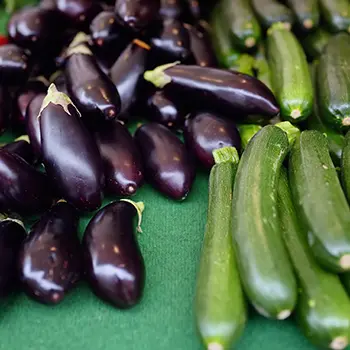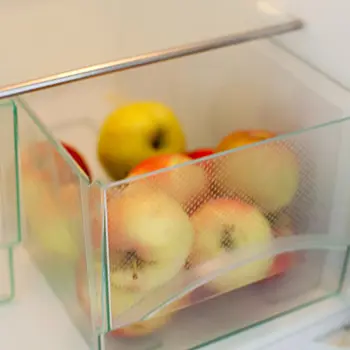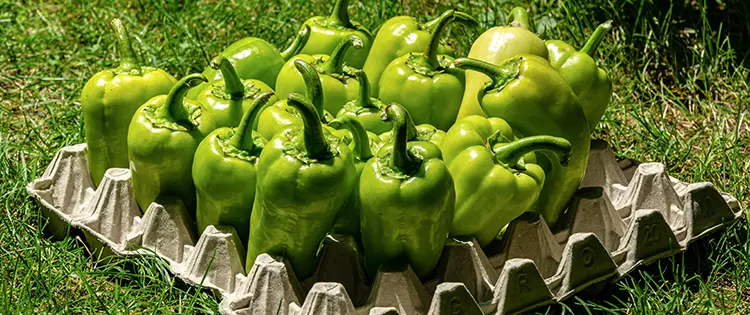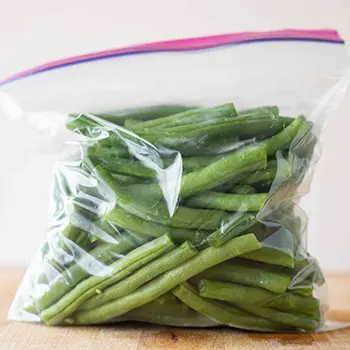You go to the grocery store and it seems like the next day, your fruits, vegetables; even the meat looks like someone got sick all over it. And why is that? It’s because you’re storing your food wrong. It’s okay, it happens to everyone along the way. Today I’ll be exploring a few often poorly-kept foods that you can do better with.
Squash and Eggplant
Any version of summer squash will hate being anywhere near eggplant. Strange, since they taste so good together in ratatouille, no?
Similarly, the gasses (that we can’t detect with our nose) that summer squash give off as they over-ripen in the fridge can make eggplant age at an alarming rate. We have the poor tend to throw all of our fruits and vegetables together in one drawer, but doing so is absolutely ruining our produce.
The simple fix here is to keep your eggplant and your summer squash apart in the fridge. That means one in the crisper drawer (ideally the summer squash) and one in the rest of the fridge. Feel free to cook them together, but don’t store them together.
Winter squash should be kept on the counter and eggplant goes to pieces fast if kept that way, so there should be no overlap between these two.
Apples
A beautiful bowl of fresh fruit on the counter is never complete without a few bright red apples included in the bunch, right?
Wrong.
Never keep fruit on the counter (other than bananas) unless it is dried, bagged, and in an air-tight container. Why? Apples are high-sugar fruit that is kept in cold storage until they make it to the shelves at your grocery store. Even there, they are often on a chilled belt or stand to help keep them looking their best.
It may sound strange to many, but put your apples in the fridge unless you’re going to be using them in the next 2-3 days. Otherwise, the sugars in the apples start to break down and you’ll end up with unsightly red lines, nasty lumps where they’ve sat on the counter, or fruits that are getting mealy and rotten.
Cereal and Cereal Grains (Rice, etc.)
Cereal is essentially grains that we’ve processed with sugar, salt, or some other yummy coating and box and sell for a huge markup. We love it and that’s no surprise: it’s made to be loved.
That said, rolling up the bag in the box or putting a twist tie on your bag of rice after opening it is the wrong thing to do.
Commonly, oats and barley, and other cereal grains we use throughout the day come in fully resealable containers. Our cereal, rice, and so forth should, too.
My cheap suggestion? Save your big, tall oatmeal containers and use them for cereal and the such to keep them stored the best way that you possibly can. No need to put these in the freezer or the fridge, they’ll do just fine on the countertop so long as they’re kept in a well-sealed container.
⇒ 22 Ingenious Hacks To Make Food Last Longer (Video)
Stone Fruits
If at all possible, stone fruits should be stored in the same crisper drawer as your cucumbers, lettuce, and summer squash within the fridge.
Why? Stone fruits give off a great deal of moisture through their thin skin as they progress through their ripeness cycle. Not only will these other thirsty vegetables appreciate the wet, but they will also be absorbed and keep the fruit better, and longer. Weird, right?
Fresh Green Beans
You go into the grocery store and see a giant pile of bright green snap beans ready for you to grab a fistful of and shove in a plastic bag, take home… and forget they exist. In a couple of weeks, you find a bag of moldy mush in your crisper drawer and try not to vomit as you throw the whole thing away.
How would you feel if I told you that those green beans have been waiting for weeks to months at the store already?
Never store your fresh green beans in a cellophane or plastic bag as you get from the store. No. Rinse them lightly, dry them, then sit them in a small colander inside of a bowl to catch anything dripping. Ideally, do not press them down because the pressure causes bruising. And bruising? That’s a perfect place for rot to seep in.
Stored like this in your fridge, you’ll have them for 2-3 weeks depending on the exact settings of your fridge.
Red Meat
Brown, slimy meat doesn’t make anybody hungry.
Oxidization happens. There’s nothing that you’re going to do to change that. Until recently, there were always far-fetched tales of meat being dyed to catch our eye or fresh meat being rolled in with older meat to sell off older stock and improve color.
Want to make your meat “pretty” again? You’re chasing butterflies, friend. Look for packages that are either vacuum sealed in the first place, or ones that are very firmly wrapped. Place your meat on the top shelf or on the closest shelf to the blower in your fridge. This will keep your meat as fresh as it can be for as long as it can be, period.
White Meat
Again with the slimy meat. At least this one is easier.
If you have an open package of meat in your fridge waiting to be used the next day, put ice cubes over it and wrap it with some saran wrap. If it is not open, go ahead and move it into a spare crisper drawer and turn the setting to the “vegetable” setting. This will help remove excess moisture.
Fresh Fish
Fish is temperamental. If you want to keep your fish fresh, put it in a small, airtight container with a little bag of baking soda open to the environment inside. This will allow your fish to breathe, but not dribble all over itself. With this, you control the odor and the moisture nearby.
Happy storing, everyone!
You may also like:
22 Ways to Boost Food Production in 2022
Easy to Build Root Cellar in Your Own Backyard (Video)
20 Foods That Can Last 20 Years











What about Tomatoes?…….
Never refrigerate tomatoes, it makes them mushy and bland.
Store bananas away from other fruit. They give off a gas that can cause other fruit to go bad quickly.